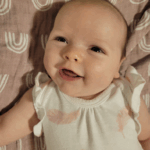“…the stone which the builders rejected has become the cornerstone.” Mt. 21:42
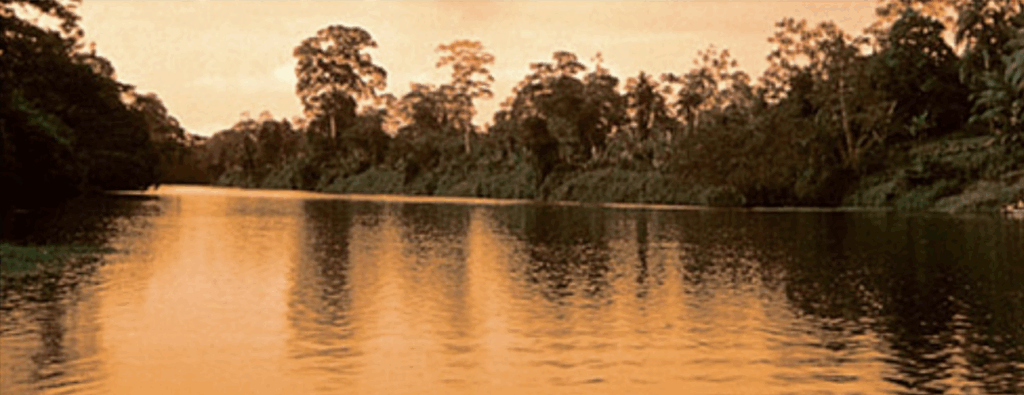
Out of the depths I have cried to you, O LORD. –Psalm 130:1
When you entered the lagoon at first light, the water was dead still, the mist hanging motionless like a memory. By now, a light breeze has worked its way up the river, ruffling the surface. The sun will soon break above the treetops on the eastern shore, and the fish will leave the shallows and head toward the center… out of reach until evening. You’ve waded and thrown, retrieved, cleared, and reloaded… waded and thrown, retrieved, cleared, and reloaded the net for two hours now this morning. It has been a good morning, with a pretty good catch. Half the casts came up empty, but half brought 1 or 2 or 3 keepers–Robalo (snook), Mojarra (Wessel’s cichlid), a couple of the Tilapia that have begun showing up in recent years, and a few wandering Mújol (gray mullet). All are safely stowed in your “red de captura,” your catch bag dragging behind you on a short rope.
Though you just completed your 75th year on this earth, you are not tired. This is your occupation. This is your calling, providing for your family. They’ll just be stirring back at the house. You are alone, but you are neither lonely nor bored. This is your element. You’ve been fishing this way since you could walk, since you first accompanied your grandfather and your father with smaller cast-off nets, more patches than original. You barely notice the mechanics of what you are doing. It became muscle memory too long ago to take note. You mostly think about what the fish are thinking, where they will be… while you softly sing and talk to God.
All morning you’ve been wading the estuary, between knee-deep and chest deep. Just now you are standing on a mud bank in four feet of water, mid-chest on you. You begin to think you should work your way back to the shore with a few more throws and then call it a morning. It’s time for breakfast. Just then, out of the corner of your eye you catch something breaking the surface to your right about 30 feet away. At first you think it is a log, but it is coming on fast and straight at you, so fast, your conscious mind seems to be thinking in slow motion. It dawns on you, “Cocodrilo!….El Macho!”…that big bull crocodile you’ve seen a couple times, far away, in this part of the lagoon. His head is pushing a Vee wake in the water… A BIG V.
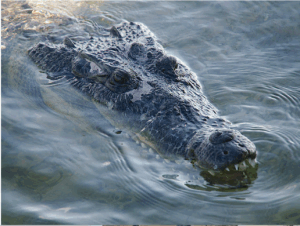 “Maybe it’s the fish… throw the bag at him.” You have just enough time to throw the bag with your right hand. But he doesn’t stop. He speeds up. In a flash of brown water, he opens wide his maw. He grabs your right hand… and crushes it…. He spins you around in the water, your hand between his jaws, feet tangled in your own net. He’s holding you down under water and pulling you out away from the bank. You don’t think “fight!” … you just FIGHT!! You fight with all you have… underwater, nearly blind for all the mud stirred up. Left fist and knees pounding and pounding this beast… but it does Nothing. Nothing phases this unstoppable monster. Your fist still crushed within his mouth, he is shaking you back and forth like a rag doll… pulling you deeper and deeper into the lagoon. You can’t think anymore…. No more air… .More than you want to get away, you want air! But you don’t breathe in. With your last breath, instead, you breathe out… you cry…What?! ……..What do you say with the last breath in your lungs !!??
“Maybe it’s the fish… throw the bag at him.” You have just enough time to throw the bag with your right hand. But he doesn’t stop. He speeds up. In a flash of brown water, he opens wide his maw. He grabs your right hand… and crushes it…. He spins you around in the water, your hand between his jaws, feet tangled in your own net. He’s holding you down under water and pulling you out away from the bank. You don’t think “fight!” … you just FIGHT!! You fight with all you have… underwater, nearly blind for all the mud stirred up. Left fist and knees pounding and pounding this beast… but it does Nothing. Nothing phases this unstoppable monster. Your fist still crushed within his mouth, he is shaking you back and forth like a rag doll… pulling you deeper and deeper into the lagoon. You can’t think anymore…. No more air… .More than you want to get away, you want air! But you don’t breathe in. With your last breath, instead, you breathe out… you cry…What?! ……..What do you say with the last breath in your lungs !!??
This is not a fictional story, contrived to lead you to ponder, “What would I say with my last breath!!??” Sure, the story raises the question. But this is an actual recounting of a true story of a patient I operated on this summer. And, I know what he said with what he believed was his last breath. I’ll tell you in a minute.
José Quintanilla is 75 years of age. He has been a fisherman all his life. He lives outside of a little village called Hicaque in the valley of the Rio Leán. Like Balfate, Hicaque is on the North Coast, but it is over near Tela, about a 3 hours’ drive to the west of Balfate in a private car…if you have a private car. Depending upon the connections, that would be more like 5 to 7 hours by short-haul buses, chicken buses we call them, the primary means of transportation between towns for most Hondurans.
I first met Don José in the Emergency Room at Loma de Luz. I think that was the third day since his near-death encounter with the crocodile. After God moved the monster to release him (more on that in a minute), barely conscious, he had pulled himself free of the net one handed, then made his way to the edge of the lagoon, crawled elbows and knees up the bank, then walked to the nearest road. Neighbors took him to his family. His family took him to the Public Health Hospital in Tela… where, after waiting half a day, they closed some of the skin with a few huge silk sutures, did nothing for the many broken bones and torn tendons, bandaged his hand and sent him to the next Public Hospital up the line, Hospital Mario Catarino Rivas in San Pedro Sula, the largest Public Health Hospital in the country.
At Catarino Rivas, after waiting half a day, at triage they learned that he was from Hicaque in the Departamento of Atlantida and said, “Oh no, you are from Atlantida, so you have to go to the Hospital in Tela.” “But that’s where we just came from. They sent me here.” “Well then, you should go to La Ceiba, because you are from Atlantida, you see.”
So they sent him out the door without even looking at his injury, without even changing the bandage. Catarino Rivas is about a 2 hour drive to the west of the Public Hospital in Tela where Don José began his public health hospital odyssey (a story I’ve heard with minor place name and wait-time variations repeated only about 10,000 times, unfortunately).
On his way back toward the east now, toward Hospital Atlantida in La Ceiba, 4 hours away, his daughter was calling around with a cell phone. Some family members had heard of Hospital Loma de Luz (with a pretty much across-the-board stellar reputation). And everyone has heard of Hospital Atlantida (with a not-so-stellar reputation…. OK, let’s face it, with a terrible reputation). So the family got a few more gallons of gas, drove right past Hospital Atlantida and straight on, another hour and a half’s drive to the east, to Hospital Loma de Luz.
In our Emergency Room on the third day post-injury, when I first briefly met and examined Don José between other operations, he had not slept since the crocodile. His hand was swollen nearly to the size of a catcher’s mitt, and he was stoically and silently sweating from the pain. I had already seen his X-rays (multiple crushed bones), and a crocodile bite is about as dirty as you get… so we added him on to that day’s already over-full Operating schedule, to wash out the wound and see what we could fix. A couple of hours later, with Don José now under General Anesthesia, sleeping and without pain for the first time in days, having removed the O-silk skin sutures while sorting out and washing out the injuries (finding bits of old fishing-line and river muck mashed into his broken bones and tendons), we began piecing together his story. He had told me in the ER, when I asked about the size of the crocodile, that from the croc’s nose to his eyes was the same as from José’s elbow to his finger tips. That would make the head of this monster to be about 2 feet long. This corresponded with what he had told Rosanne in her Pre-op Anesthesia interview.
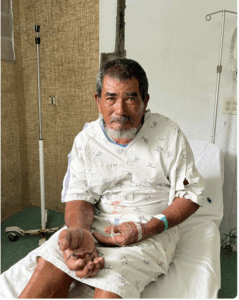 There are two crocodilians native to Honduras: the smaller and less aggressive Spectacled Caiman (Caiman crocodilus) and the much larger and much more aggressive American Crocodile (Crocodylus acutus). The American Alligator (Alligator mississippiensis), is native to the southeastern USA, not Honduras. So, this was an American Crocodile.
There are two crocodilians native to Honduras: the smaller and less aggressive Spectacled Caiman (Caiman crocodilus) and the much larger and much more aggressive American Crocodile (Crocodylus acutus). The American Alligator (Alligator mississippiensis), is native to the southeastern USA, not Honduras. So, this was an American Crocodile.
With a two-foot head, that would make this monster about as big as they get, a male about 18 feet in total length. Other than time-since-injury and treatment prior to arrival, that was about all the story I had gotten. From talking with the family, our OR crew had pieced together the story since the attack. But Rosanne always gets the most interesting histories. She had gotten most of the story I told of the attack from talking and then praying with Don José prior to surgery. She recounted the whole attack and fight scene she had teased from this taciturn old man in the Pre-operativo.
When Rosanne asked him what did he do under the water, he said he fought and fought, but it was no good. “You can’t believe how much my knees and my left hand hurt from hitting him, but it did nothing. I fought until I had no more breath.” “What did you do? How are you alive?” “Well, with my last breath… I cried out to the Lord, I called on His name.… and He heard me… and the beast let me go… right then. The instant I called out the Lord’s name to save me, the crocodile released me… and disappeared!“ “And how did you know to call on the Lord’s name?!!” “Oh, I suppose it just came naturally. I talk to him all day long.”
After Rosanne finished her recounting of the story, silence reigned in the Operating Room for a deep breath or two, then we all looked at one another, shaking our heads, each quietly saying something like “wow,” and kept working. There were macerated tendons to piece back together and crushed bones to pin. We kept Don José as an inpatient for several days post-op, treating his infection with IV antibiotics and wound care. Since then we have seen him in Terapia quite a number of times–first for wound care, then later for removing the pins, then beginning Physical Therapy. He is now working on regaining mobility of his hand, and it looks like he will throw a net again.
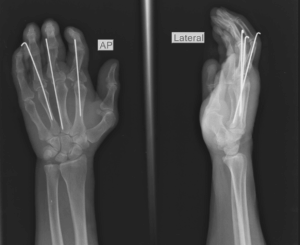 I have been reminded of Don José’s remarkable story each time he returns. Each time I have wondered what I would do with the last breath in my lungs. There are few of us, maybe none of us, who will wrestle an 18-foot crocodile underwater, a monster intent upon our death. But you probably don’t need me to tell you that, outside of Eden, this world is not a safe place. It never has been. And we live in an age of unprecedented perils, too numerous to count, some of them unseen and unknown. Any of us, maybe all of us, may soon be taken by surprise by some monster now just below the surface, utterly implacable, intent upon our destruction, and unphased by our resistance. Taken by surprise, what would we say with the last breath in our lungs? Who would we call upon? Would we remember in that instant to call upon the only one who could save us?
I have been reminded of Don José’s remarkable story each time he returns. Each time I have wondered what I would do with the last breath in my lungs. There are few of us, maybe none of us, who will wrestle an 18-foot crocodile underwater, a monster intent upon our death. But you probably don’t need me to tell you that, outside of Eden, this world is not a safe place. It never has been. And we live in an age of unprecedented perils, too numerous to count, some of them unseen and unknown. Any of us, maybe all of us, may soon be taken by surprise by some monster now just below the surface, utterly implacable, intent upon our destruction, and unphased by our resistance. Taken by surprise, what would we say with the last breath in our lungs? Who would we call upon? Would we remember in that instant to call upon the only one who could save us?
This was so engrained in Don José that he saw it as only natural, intrinsic to the relationship, because he “talked with Him all day long.” He did not wonder whether his relationship was legitimate positionally or relationally. Those are arguments for professors. He just knows that he belongs. If you want “a hope and a future” like that, and don’t know who to pray to, then let’s talk. Look me up.*
But if your hope lies with Jesus Christ, then don’t be a stranger. Don’t be too busy, and don’t be too timid.
You are a blood-bought child of the living God. You belong. Walk it out. Look at your day as an ongoing conversation with the Father, through the Son, by the Spirit. This was written in His Word at the beginning of this age. It is still there at the end.
In Him,
Jefferson McKenney, M.D.
A Letter to You from Kelsey McKenzie
Dear Cornerstone Foundation and Supporters,
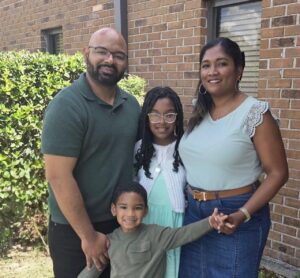 I write to you today with a heart overflowing with gratitude to God and to each of you. These past months have been among the most challenging of my life, yet through every trial, your faithful prayers and support reminded my family and me of the love of Christ lived out through community.
I write to you today with a heart overflowing with gratitude to God and to each of you. These past months have been among the most challenging of my life, yet through every trial, your faithful prayers and support reminded my family and me of the love of Christ lived out through community.
On April 30th of this year, I received a life-saving kidney transplant. I know without question that this new gift of life is from the Lord, made possible through the generosity, love, and obedience of this community. Because of your support, my wife can enjoy more years with her husband, and because of your prayers, my children can share many more moments with their dad. Your kindness means the world to us, and for that I am deeply grateful.
I also offer heartfelt gratitude to Caron Amend, who selflessly donated her kidney. Her sacrificial gift has forever changed my life, and I thank God for her courage and faith. I am equally grateful to her husband, Michael, for standing beside her in this act of love.
Thank you, Cornerstone Foundation, for being the hands and feet of Jesus in my life. Your prayers, encouragement, and generosity are also a living witness to the goodness of God to everyone I meet. And to you who are reading this, hold fast to God, because He alone can renew your strength. Be encouraged; our God is with you, and He will never leave your side (Deuteronomy 31:8).
With gratitude to God and deepest thanks,
Kelsey McKenzie
******
News and Needs
2 – Building and Growing: At Loma de Luz we are constantly building and growing… God’s Kingdom, people, and buildings. We plan to open a new page on the Cornerstone Foundation Website specifically about building. It’s not up yet, but look for it soon. We’ll just mention a few here, from small to large, as examples.
- At El Camino School, we have a beautiful playground for the younger students. But the tropical sun makes much of it unusable during parts of the day, as there is no shade in the area and the equipment gets very hot to the touch. We plan to build a galera roof over the playground.
- Also at El Camino, we are completing a coffeeshop–for students to gain experience in the service industry, for a place to meet with friends, and for… coffee (and free wifi)… and a cafeteria, to offer a hot meal for our students.
- A metal roof for a barn down at the Sanctuary farm, and a metal roof for the wood reclamation building.
- We have been working at expansion of the hospital for … well, for more than 5 years now… and are about 65 % finished with this complex larger project.
For years, the Cornerstone Board has been waiting on the Lord’s timing to build a mission conference and training center, one at Loma de Luz, and one at the Cornerstone Foundation property in Biloxi, MS, USA, both to share what we’ve learned over more than 30 years, to help train young professionals coming up, and with an eye to sustainability.
If you would like to hear more about any of these, please contact us @ [email protected].
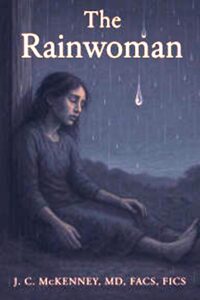 3 – The Rainwoman: Dr. McKenney’s updated and reprinted book, The Rainwoman, is available online (Amazon, Kindle, Barnes & Noble, etc.). Just type the following into any search engine: The Rainwoman J.C. McKenney. The Kindle / ebook version is $7.99, and the paperback is $9.99. Proceeds go to the Cornerstone Foundation.
3 – The Rainwoman: Dr. McKenney’s updated and reprinted book, The Rainwoman, is available online (Amazon, Kindle, Barnes & Noble, etc.). Just type the following into any search engine: The Rainwoman J.C. McKenney. The Kindle / ebook version is $7.99, and the paperback is $9.99. Proceeds go to the Cornerstone Foundation.
Amazon:

Barnes & Noble
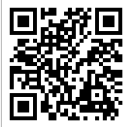
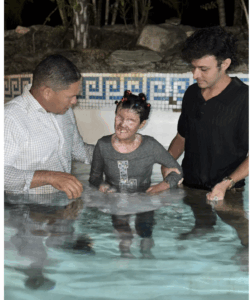 4 – Daneli: Many of you have met and many of you have prayed for Daneli, our perpetually joyous young girl at Casa Santuario born with Xeroderma Pigmentosa (XP).
4 – Daneli: Many of you have met and many of you have prayed for Daneli, our perpetually joyous young girl at Casa Santuario born with Xeroderma Pigmentosa (XP).
Daneli, now 18 years old, has only this summer been diagnosed with another cancer, this one at the base of her tongue and beyond removal by surgery. Daneli is undergoing chemotherapy there at Loma de Luz and so far tolerating it well. She also recently asked to be baptized…. And so…she was…on a beautiful day in October.
May the Lord guide you and be at your side, in your depths and in your joys.
